Predicting the power of all Hearthstone's new Death Knight cards
Don't blow your dust without reading our high-legend player's analysis of which undead heroes are actually worth playing.
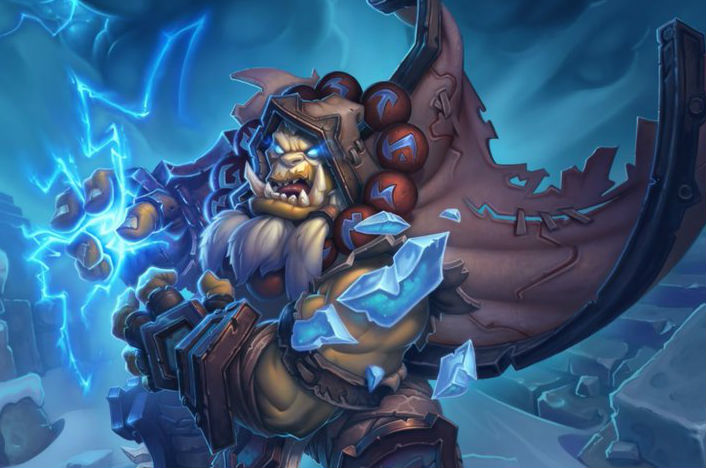
When Hearthstone's Journey to Un’goro rolled around, I attempted to predict the power level of all the Quest cards. The results weren’t perfect, but they did come pretty close in terms of which cards saw serious play. Today’s task is arguably even more challenging: assessing the new Death Knight cards arriving tomorrow with the Knights of Frozen Throne expansion. Unlike the Quests, the deckbuilding challenge posed by each of these heroes is less straightforward, as you aren’t always going to plan around them being in your hand when you want them.
In order to achieve a reasonable degree of predictive accuracy with the Death Knights (and any cards, really), one of the most important steps is to actually build decks that they could have a home in. So that's what I did—and, without further ado, here's my rundown of which Death Knights are likely to see competitive play and sample decks they might fit in. Click on the images if you're struggling to to read what the new hero powers do, and let me know which Death Knight you think will be strongest and why in the comments.
THE GOOD
Uther of the Ebon Blade (Paladin)
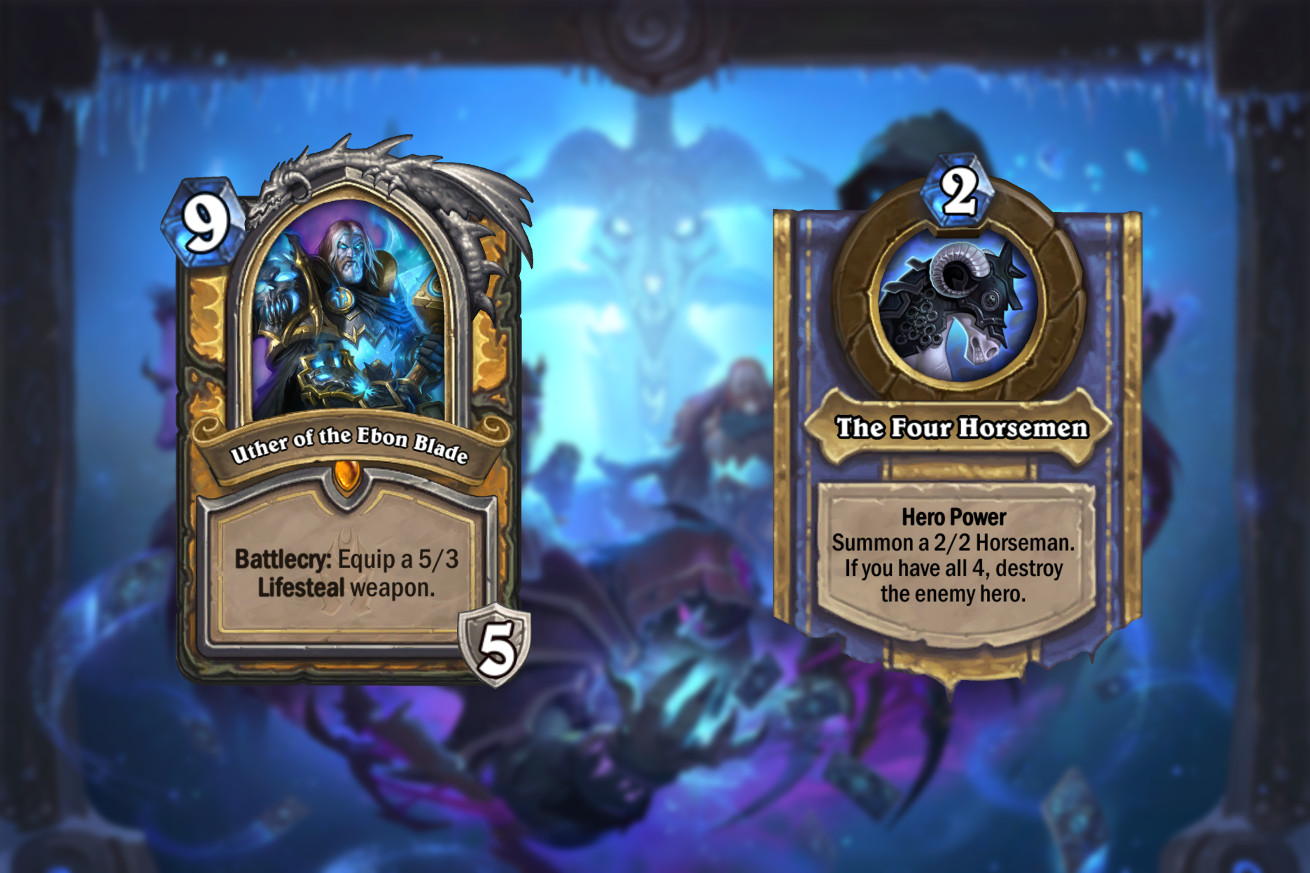
For nine mana, you expect a lot, and evil Uther delivers. On the turn you play him you heal for 10 between the armor and weapon swing. That alone is substantial, not counting the additional healing you amass over subsequent hits. You also get an upgraded hero power, quite like Justicar Trueheart, which is something Paladin has historically leveraged successfully. It even gives you an alternate win condition if you manage to have all four horsemen survive, though I suspect that is unlikely to happen often. While Uther is certainly slow, he can likely find a home in control Paladin lists.
The one major issue with Uther (beyond his cost) is simply that he comes with a three-charge weapon and Paladin needs to be mindful of not packing too many weapons (including Tirion's Ashbringer of course), or run the risk of having them rot in the hand.
Thrall, Deathseer (Shaman)
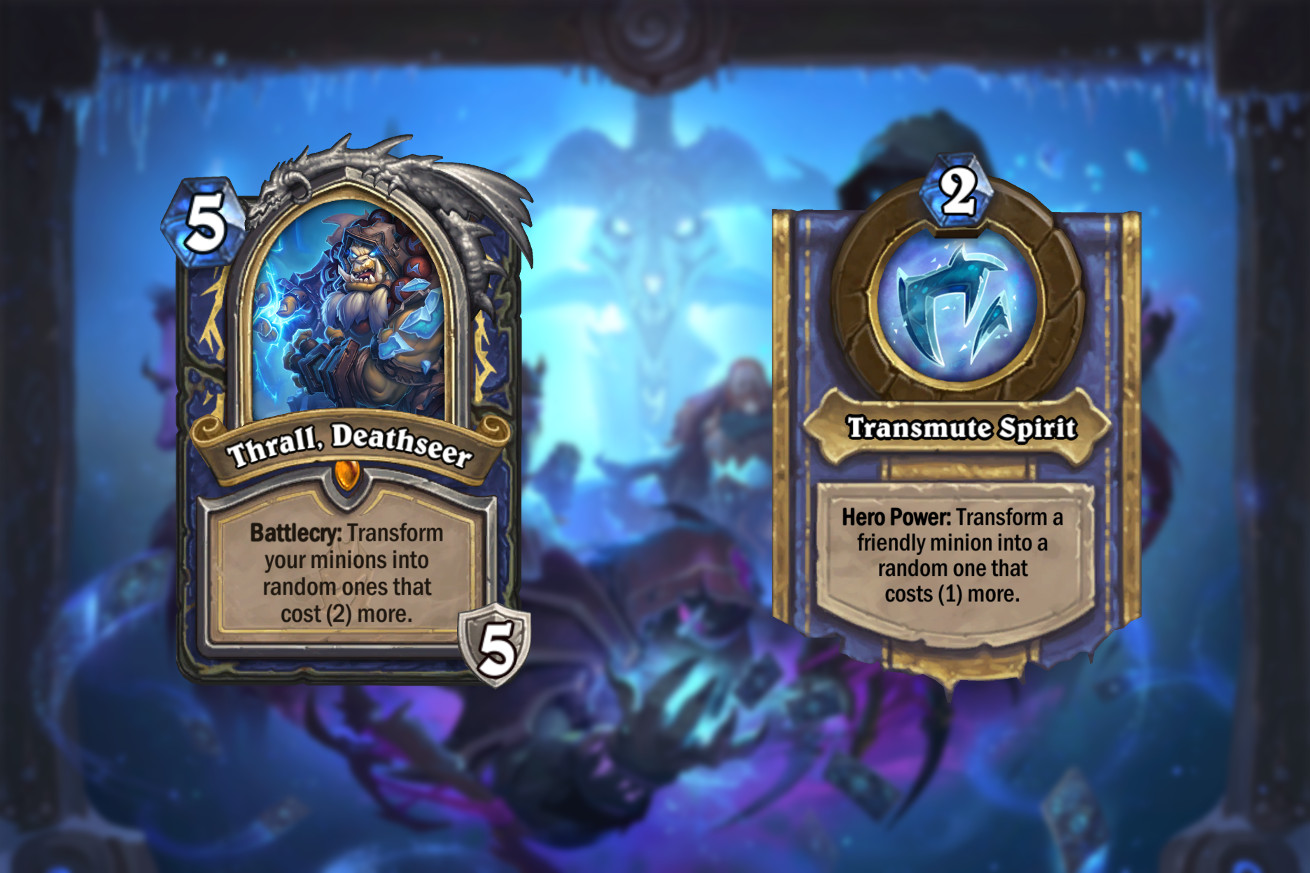
When I look at Thrall and his affordable 5-mana cost, I see two things: a copy of Evolve stapled to a copy of Bloodlust. While his effect isn’t quite as straightforward as that, it captures the essence of what Thrall does and when he does it. As both cards have seen success in Shaman, I see Thrall slotting right into the same kind of lists as the former two cards did. Further, Thrall increases the consistency of the Evolve strategy by effectively giving you a third copy. Building consistency is a winning strategy.
The biggest gaming news, reviews and hardware deals
Keep up to date with the most important stories and the best deals, as picked by the PC Gamer team.
The power offered by Transmute Spirit also helps cement tempo in a second way: by “healing” damaged minions as you evolve them. If you can get even or ahead on board, Thrall will likely keep you ahead and, in some cases, keep your minions out of opposing AoE range as well.
The main downside with Thrall is that you lose your totem hero power, hindering your ability to build up a wide board for future Bloodlusts or Flametongue Totems. Accordingly, Thrall is weak when you’re behind (just like Bloodlust). You also can’t just play him with a Dopplegangster to regain control of the board before turn 10.
The real question of Thrall is whether you use him to go all-in on the evolve strategy, whether you replace a copy of Bloodlust in the existing lists, or whether you forget all about him and just play two copies of Bloodlust instead.
Valeera the Hollow (Rogue)
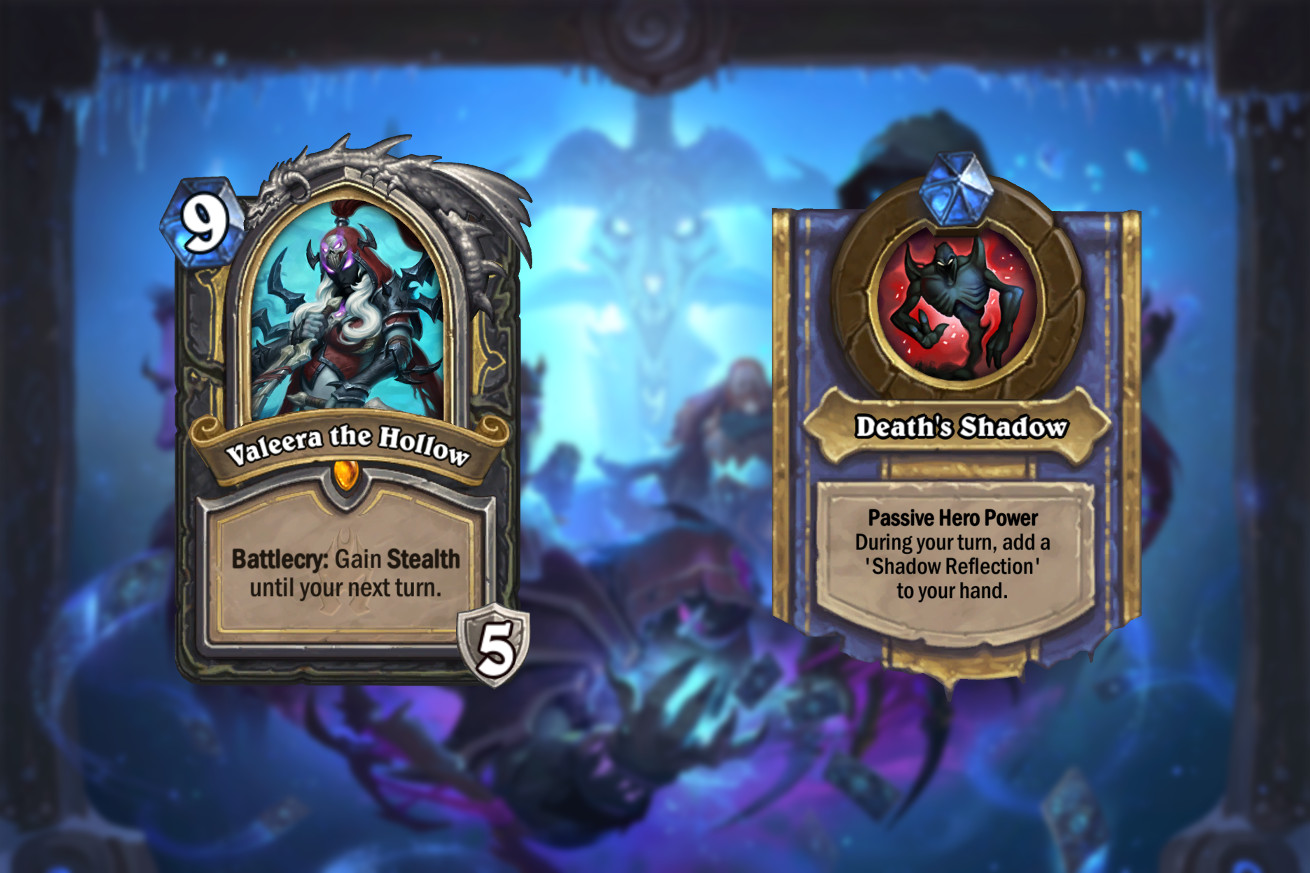
I will say this: regardless of whether Valeera ends up being good, she’s my first golden craft on day one. Not only do I love Rogue as a class, but I find her effects to be the most unique and interesting of the bunch. Coincidentally, that also makes her one of the most difficult of the Death Knights to read in terms of power. For the most part, she will not have an immediate effect on the board. That's counteracted, to some extent, by what she does offer: the ability to not die on your opponent's following turn. Once you play Valeera, very little can realistically kill you because of the armor and stealth, so you'll get at least one turn to make use of her Shadow Reflection.
When I see “don’t die” and “extra copies of spells,” my thoughts immediately drift to burst combos. Coupled with the new sustain Rogue has access to (in the form of Shadowblade and Prince Valanar), there is some chance that a new Malygos Rogue deck could emerge, leveraging Valeera to buy a little extra time, Mana, and/or damage to finish the game.
The problem with Valeera as a card is the cost. Nine is a hefty price to pay for the ability to do things on subsequent turns. Rogue has never been a capable control or value class and aggressive/tempo Rogues look to finish the game before that point.
Shadowreaper Anduin (Priest)
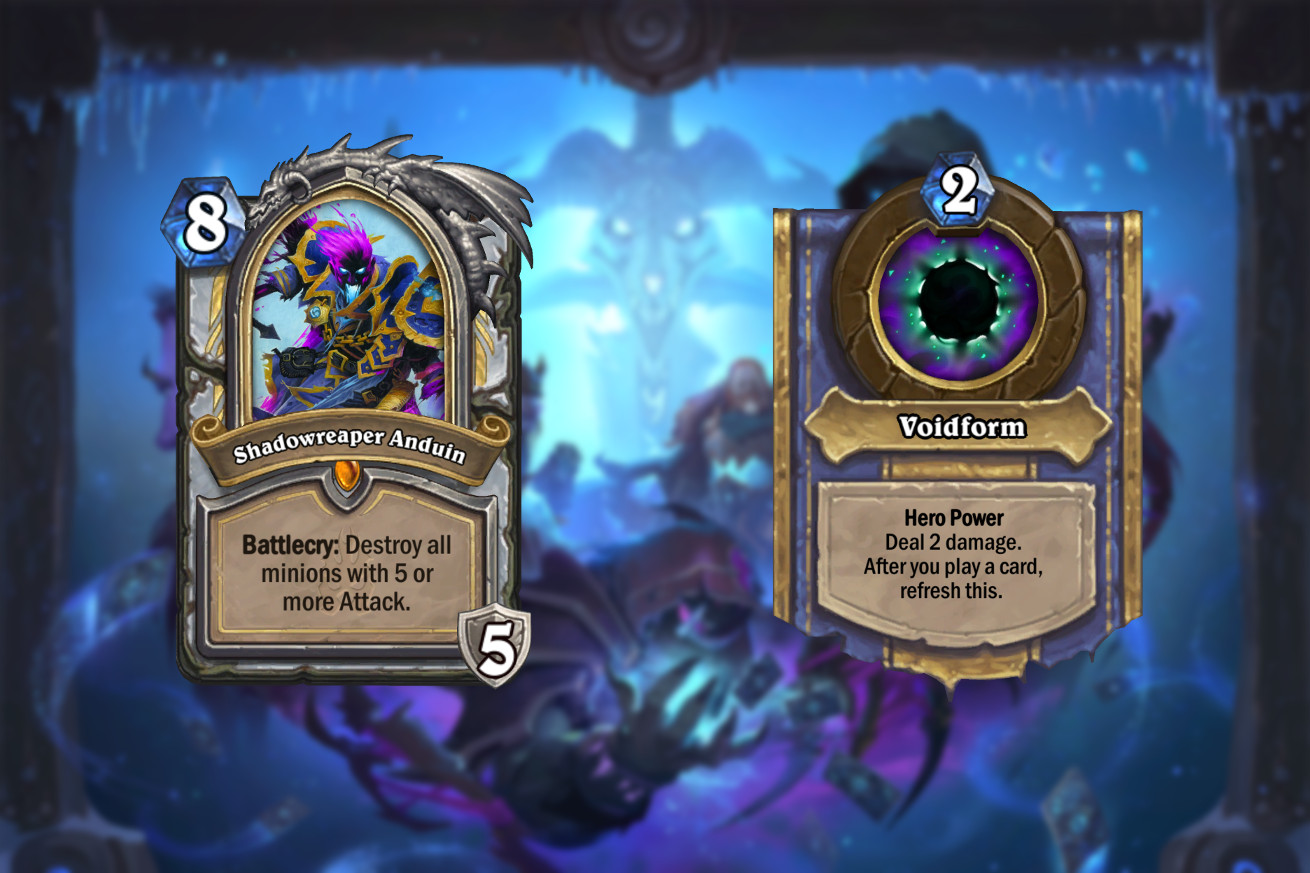
Coming in at the beloved 8-Mana slot is Anduin. Not only does that enable you to hero power on the turn you play him, but Shadowreaper also brings an immediate—and powerful—effect: destroying all minions with 5 or more attack. This effect cements him immediately within a control archetype, which is something Priest has historically done very well.
The most powerful aspect of Voidform is its ability to combo with Raza the Chained. Getting a free 2 damage with every card you play borders on absurd. It can just as quickly close out a game as it can gain permanent control of a board. Even without the use of Raza's cost removal effect, getting two activations of Voidform on any turn is still strong.
The concerns surrounding his playability revolve around his being generally bad against aggressive decks, the minions his battlecry will miss (lots, in the current meta), and the possibility that other Priest strategies might simply be better. Further, if you wish to take the Raza route, there are the standard consistency challenges that come from playing a highlander deck.
AVERAGE
Bloodreaver Gul’dan (Warlock)

Gul’dan feels like a good card in theory, and certainly within the realm of playability. His cost and Battlecry is comparable in N’zoth in many ways, which generates enough value on paper to make him look appealing. However, Gul’dan is also weaker than N’zoth in that you don’t get the old god's 5/7 body and he also summons Demons rather than Deathrattles. This is a bit of a problem in that Gul’dan is definitely a card for long matches, and the Warlock decks that go into the late game often don’t run many Demons: there’s the new Dreadlord, maybe Abyssal Enforcer, and that’s about it. You could play Voidwalkers as well for the taunt, though they’re weak. Further, existing demons aren’t particularly sticky, and that will leave you vulnerable to AoE clears after playing him.
The three-damage lifestealing hero power is also a great tool for Warlock, as they leverage their health total a lot in the early game. That said, another complication arises from the fact that Warlocks already have another card that can close out long games effectively by clicking the hero power button: Jaraxxus. Something tells me 6/6s are better than 3-damage drain lives.
This leaves Gul’dan at a strange crossroads. He’s good, just probably not as good as either N’zoth or Jaraxxus at doing what he does. As you’d be including him to deal with the same kinds of matches as the former two, his slot seems better spent elsewhere.
Malfurion the Pestilent (Druid)
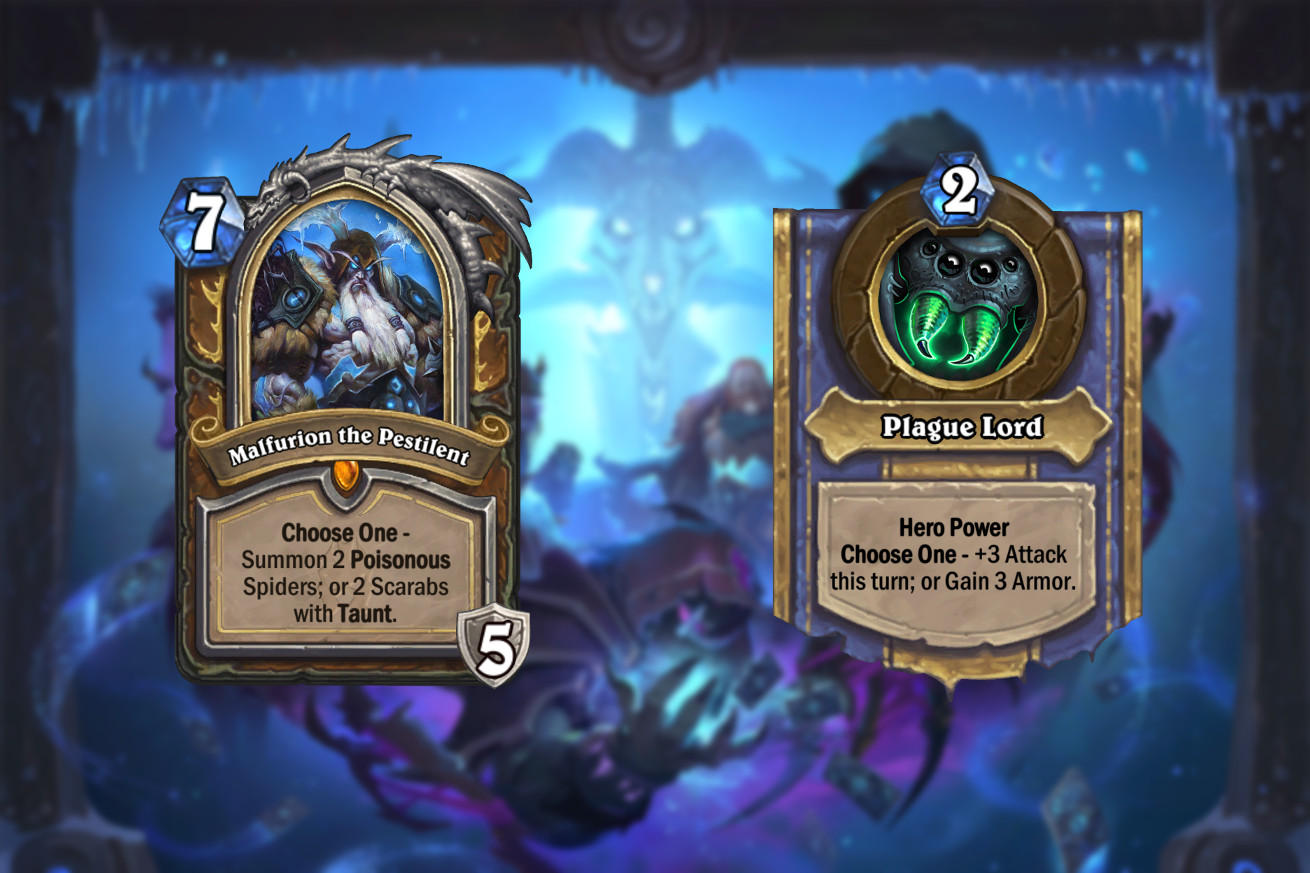
Given his cost and effect, the most apt comparison for Malfurion is again with Justicar. You get a better upfront deal than you did with her, gaining both armor and two defensive bodies on the board, beating Justicar's poor stat distribution. Malfurion also allows you to better tailor your hero power to your opponent than Justicar: you get more armor against burn decks and more attack when you’re on the beatdown plan.
The problem with Malfurion isn't that it's bad (in the same way Gul’dan isn't), as much as it's offering Druid something the class hasn't historically wanted. Druids didn't use Justicar because they weren't looking to get a lot of value out of their hero power over time. They won in other ways. That's the same issue here. Malfurion only feels average because I have a hard time imagining a deck that wants the hero power that badly. If you just want the taunts, Spreading Plague seems the superior pick (or even Ancient of War on turn seven). If you want armor, you should already have enough tools for that.
THE BAD
Scourgelord Garrosh (Warrior)
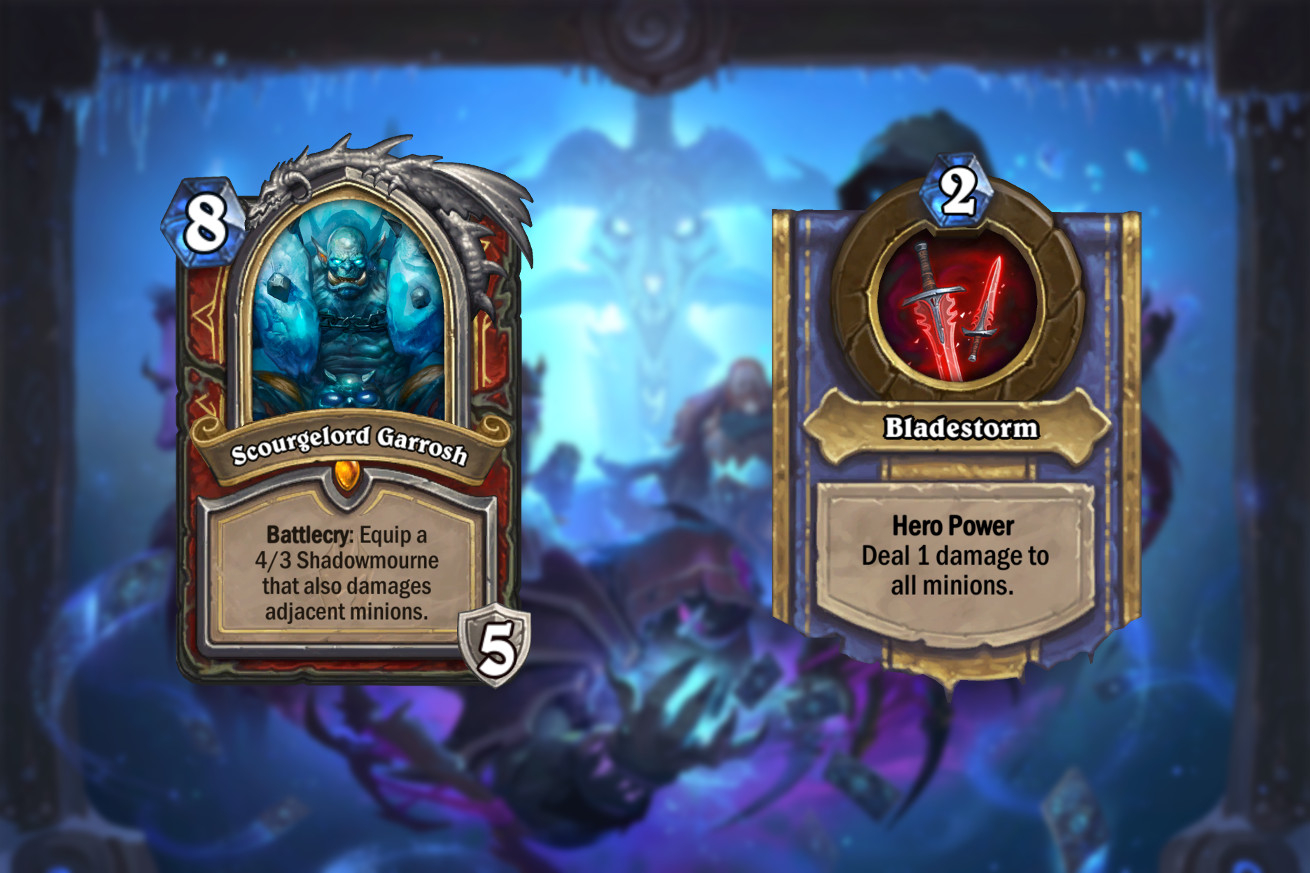
At 8 Mana, the cost of Garrosh initially appears appealing. The 4/3 weapon you get is quite good as well, allowing you to quickly cleave down an opposing board at a reduced cost of life (as you can attack weak minions and still damage larger ones).
Unfortunately, the appeal of Garrosh begins to diminish when you consider his hero power: whirlwind. For a slower, control list, the loss of armor up seems like a rough tradeoff to make, especially when you consider that whirlwind abilities are better earlier in the game than later. That thought also makes him feel a bit less appealing for tempo lists, as I envision those being substantially more aggressive. That means you will be less likely to reap the benefits of the whirlwind in those decks as well, as most of your minions that benefit from the effect will likely already have been spent.
While he offers a great weapon, it seems like he just might not have a home.
Frost Lich Jaina (Mage)
*No sample deck—couldn't make it work in theory

As noted earlier, at 9 mana you need a lot from a card. Jaina delivers a Frost Elemental, the standard armor boost, and Lifesteal for all your elementals. She even offers a long-term value/life engine in the form of Icy Touch. In some respects, she is like Jaraxxus: a hero built to win by steadily grinding out your opponent and building a board. That is precisely why I don’t think she will end up seeing play.
What Jaina offers is a lot of potential value and sustain over time. In the game of Hearthstone, however, slow and steady rarely win the race. As far as Mage plans go, I’m not sure I see a grinder style of play doing better than the lists that simply end the game with massive burst damage. Why bother winning slowly when you can win quickly?
I also don’t value the lifesteal effect very highly. If you take a look at the existing list of elementals for Mage you’ll notice that they’re largely aggressive in nature. An aggressive elemental package does not mesh well with a slow, grindy death knight. This inherent tension made building a deck to fit Jaina almost impossible. Further, you can never count on having any elementals on the board and available to attack once you play Jaina. Sometimes you might, but if you’re counting on that to make her good, it’s likely you’ll end up disappointed.
Deathstalker Rexxar (Hunter)
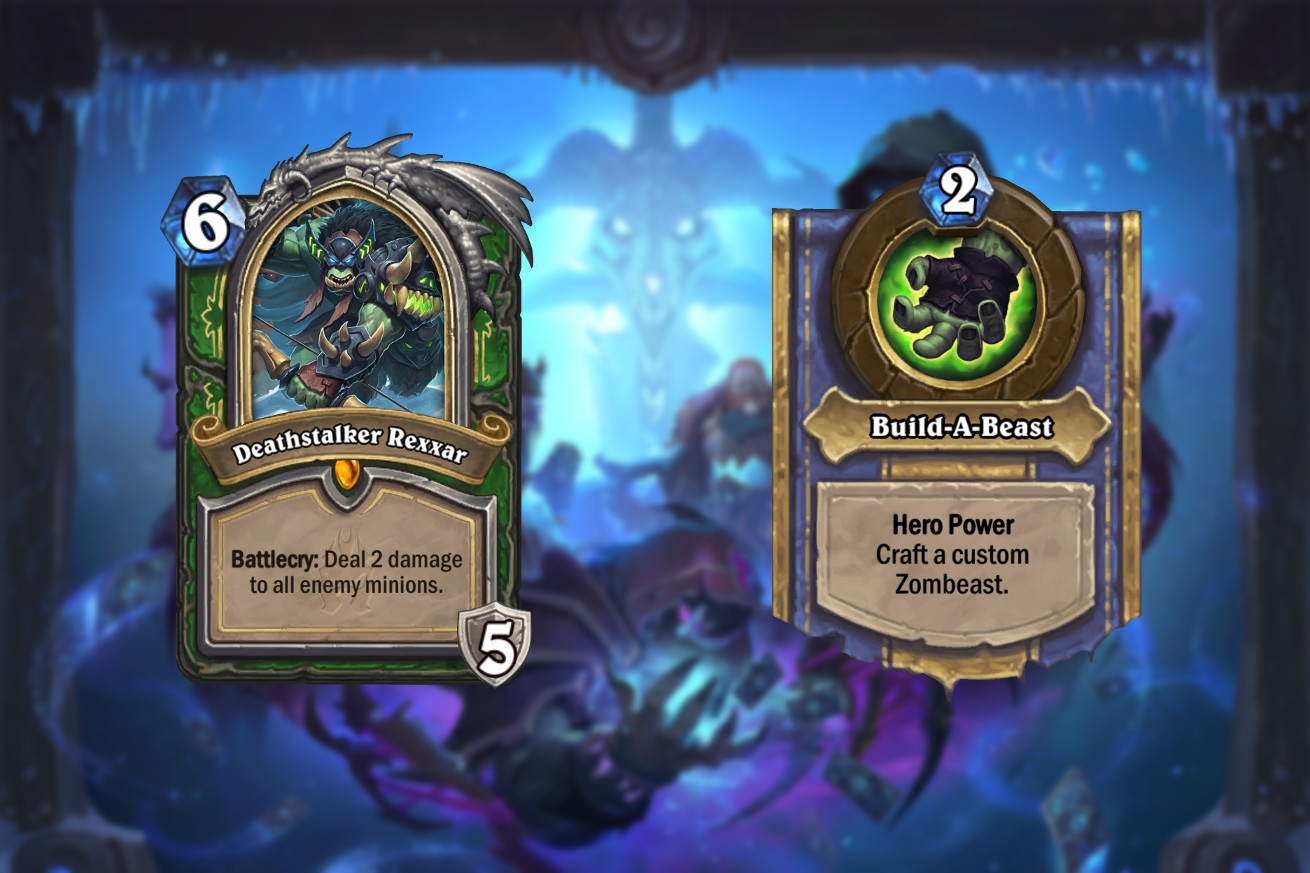
At a mere 6 mana coupled with an immediate board clear effect, Rexxar has a very appealing front half. Unfortunately, that’s where the appeal ends. Much like Jaina, Rexxar is a value-oriented hero. However, his DIY effect is slow. Very slow. It costs two mana to build the beast, then probably at least 5 or 6 mana to play it. Sure, you will be getting a lot of very powerful Zombeasts, but you really won’t be able to play the other cards you have with them too effectively. This makes Rexxar look like a painfully slow Jaraxxus without the weapon.
Also like Jaina, Rexxar’s long-term game plan tends to clash pretty deeply with Hunter’s standard aggressive strategy. This means you either put Rexxar in an aggressive deck (which would probably be better without him choking your hand or removing your steady shot), or you make a bad control deck where he fits. But if you’re looking to play slow control matches, why are you playing Hunter?
Once Knights of the Frozen Throne has launched and settled in, we'll be updating our list of the top 20 legendary cards to craft. Keep it bookmarked to see where the new Death Knights end up ranked.

